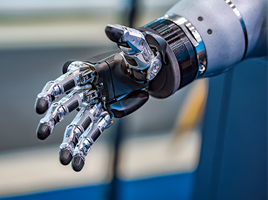ERP News – worldwide – erpnews.com – Software AG shared its predictions for the manufacturing and supply chain industry in 2016, derived from its expertise, market observations and interactions with its customers.
Sean Riley, global manufacturing and supply chain solutions director at Software AG, noted: “2016 will be a year fraught with opportunity and uncertainty. The only certainty is that manufacturers will seek to become more flexible and more agile in their business practices, value chains and customer offerings. This is because their customers and the markets they serve are changing, and the way business is conducted around the world is transforming at a never-before-seen pace. I believe there are six key initiatives that manufacturers will need to adopt to be successful in 2016.”

1. Digital Transformations Drive Growth and Profit
Manufacturers will adopt technologies in the coming year that will allow them to transform their operating models, and digitally connect processes, events, actions, internal associates and external partners. This will enable manufacturers to develop global standards that are flexible to accommodate regional, customer or product requirements.
Additionally, information about product usage, production capabilities, customer requirements and market requirements will be ingested, analyzed and shared faster than ever before. Becoming a digital enterprise ensures the productivity of associates is not only fully utilized, but also that their knowledge is spread across the enterprise. This will be central to manufacturing strategy and will be the lynchpin for all major initiatives as the success of this adoption will be directly measured by the impact on the bottom line.
2. Obsessive Customer Focus Pushes Innovation
Understanding customer requirements, and innovating based on known and unknown wants will begin shaping manufacturing value chains. This will spur manufacturers to adopt capabilities, such as mass customization, faster than expected in order to provide differentiated products to business and consumer customers. This customer-focus shift will be coupled with the increase of demand-driven micro logistics networks that push finish goods closer to the customer and are able to nimbly respond to customer demand.
3. The Internet of Things (IoT) Fuels New Revenue
IoT will drive a shift in business models that price based on availability rather than goods or services. In 2016, manufacturers will begin focusing on providing pricing models for equipment and products based on controllable outcomes. This will be most prevalent in several selected industries, such as industrial equipment, power generation and HVAC providers. These pricing models will exactly match customer requirements to compensate for static growth and hard-fought margins.
As an example, industrial equipment manufacturers will provide pricing based on yield, quality availability and uptime. This is a result of them being able to monitor equipment performance, and dynamically predict remaining useful life of equipment and components to ensure assets are effectively maintained and utilized without failures or unplanned maintenance interruptions.
4. Know What’s Where and When
Central to ensuring inventory usage is maximized, which IoT aids with, is the ability for manufacturers to increase visibility into all inventory levels. This includes static materials and maximizing the value of, and gaining real-time visibility into, inventory in transit. Equally important is the ability for manufacturers to become resilient to exceptions and disruptions. This will enable manufacturers to eliminate short-term forecasting and become near-term demand-driven, also known as capacity for resiliency.
Central components of this capacity for resiliency are supply chain risk management and enterprise quality management, and in 2016, an incorporation of 3D printing. This is part of an innovative postponement strategy to ensure specific products can be utilized for specific demand at the last possible time, ultimately increasing the total value of held inventory.
5. Collaborate to Innovate, Cautiously
Manufacturers are increasingly relying upon suppliers to provide high levels of service, and in 2016, they will begin relying on them to provide product and service innovations that support customer-centricity, operational excellence and supply chain resiliency. This will require a deeper strategic understanding of unique and standalone capabilities and capacity, and a comprehension of the capabilities that can be delivered by a group of partners and the enterprise.
On this basis, manufacturers will transition their supply chains to supply webs, in which partners are interdependent, co-innovative and collaborative with each other on both a tactical and strategic nature in order to create shared and distributed value.
6. Protect Your Property
According to analysis by Netnames, counterfeiting increases by 15 percent annually and already costs manufacturers a staggering $1.8 trillion dollars in lost annual revenues. Unlike previous years, the protection of both intellectual and physical property will become paramount in 2016, especially as manufacturers, and their partners, become more connected and digital. Information sharing is critical to successful collaboration. However, protecting schematics and technology advances from piracy, or theft from suppliers will force many manufacturers to make some very difficult decisions.
Manufacturers will take direct action to monitor partner production outputs, and component and materials orders, and take a concerted effort to track certified products to quickly identify the root causes of found counterfeit goods. These efforts were not being done in earnest until now.
“The digital transformation can be seen across the entire manufacturing industry, and new initiatives and ramifications from this shift will take top priority in 2016,” concluded Riley.






